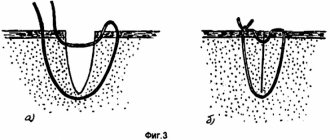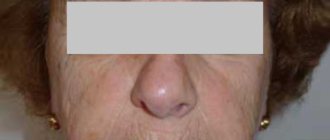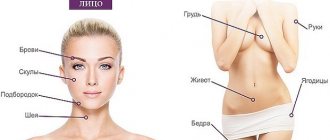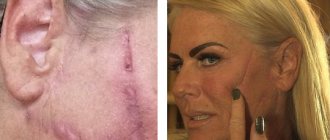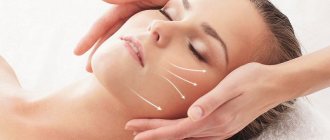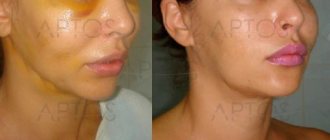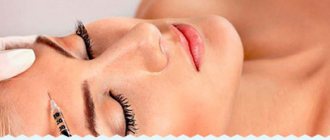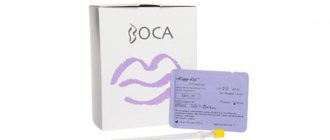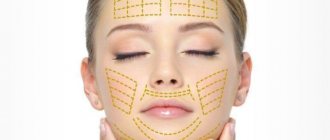The suture is an important element of plastic surgery.
The technique of applying it depends on whether it will be possible to maintain the naturalness of facial expressions and features. In addition, every patient, when undergoing plastic surgery, wants no traces of the operation to remain on his face. Therefore, the doctor’s task is to choose the correct method for completing the surgical intervention so that rough scars do not form in the future.
Types of suture materials and suturing methods in modern medicine
An ideal suture material should have the following characteristics:
Be smooth and glide without causing additional damage. Be elastic, stretchable, without causing compression and tissue necrosis. Be durable and withstand loads. Tie securely in knots. Be biocompatible with body tissues, inert (do not cause tissue irritation), and have low allergenicity. The material should not swell from moisture. The period of destruction (biodegradation) of absorbable materials must coincide with the time of wound healing.
Different suture materials have different qualities. Some of them are advantages, others are disadvantages of the material. For example, smooth threads will be difficult to tighten into a strong knot, and the use of natural materials, so valued in other areas, is often associated with an increased risk of developing infection or allergies. Therefore, the search for the ideal material continues, and so far there are at least 30 thread options, the choice of which depends on specific needs.
Suture materials are divided into synthetic and natural, absorbable and non-absorbable. In addition, materials are manufactured consisting of one thread or several: monofilament or multifilament, twisted, braided, having various coatings.
Non-absorbable materials:
Natural – silk, cotton. Silk is a relatively durable material, thanks to its plasticity it ensures the reliability of knots. Silk is a conditionally non-absorbable material: over time, its strength decreases, and after about a year the material is absorbed. In addition, silk threads cause a pronounced immune response and can serve as a reservoir of infection in the wound. Cotton has low strength and is also capable of causing intense inflammatory reactions. Stainless steel threads are durable and produce minimal inflammatory reactions. Used in abdominal surgeries, when suturing the sternum and tendons. Synthetic non-absorbable materials have the best characteristics. They are more durable and their use causes minimal inflammation. Such threads are used for matching soft tissues, in cardiac and neurosurgery, and ophthalmology.
Absorbable materials:
Natural catgut. The disadvantages of the material include a pronounced tissue reaction, the risk of infection, insufficient strength, inconvenience in use, and the inability to predict the timing of resorption. Therefore, the material is currently practically not used. Synthetic absorbable materials. Made from degradable biopolymers. They are divided into mono and polyfilament. Much more reliable compared to catgut. They have certain resorption times, which differ for different materials, are quite durable, do not cause significant tissue reactions, and do not slip in the hands. Not used in neuro and cardiac surgery, ophthalmology, in situations where constant strength of sutures is required (for suturing tendons, coronary vessels).
Suture methods:
Ligature sutures - they are used to ligate vessels to ensure hemostasis. Primary sutures - allow you to compare the edges of the wound for healing by primary intention. Sutures can be continuous or interrupted. According to indications, immersed, purse-string and subcutaneous sutures can be applied. Secondary sutures - this method is used to strengthen primary sutures, to re-close a wound with a large number of granulations, in order to strengthen a wound that heals by secondary intention. Such sutures are called retention sutures and are used to unload the wound and reduce tissue tension. If the primary suture was applied in a continuous manner, interrupted sutures are used for the secondary suture, and vice versa.
Threads, needles, knots: what and how do surgeons sew?
Surgical suture is an important part of any operation, affecting both the risk of complications and the aesthetics of the body. Alexandra Altareva, a surgeon of the highest category, head, told the Sibmeda portal about the materials and techniques used today. operating unit of the GNOKB, and Vitaly Igumnov, plastic surgeon, candidate of medical sciences, full member of the OPREH.
Hand stitch is in the lead
The surgeon's hand-made suture remains the primary method of securing tissue during surgery. Although, of course, quite a few other methods of connecting tissues during surgery have already appeared.
“Titanium skin staples, the so-called skin stapler, have appeared; this is a very convenient way to connect the edges of a skin wound. There is also a special tool for removing these paper clips. A suture material called “loop” appeared. An extremely convenient and quick way to stitch up a wound. The method of joining tissues using a staple suture is used, and there are even absorbable staples. Special stitching devices of linear or circular type, of different sizes and diameters are used. Endoscopic staplers are available. These devices are very convenient; the operation time is noticeably reduced thanks to their use.”
, - said Alexandra Altareva.
However, they are not always available for various reasons, including high price. Surgical needles and threads are always available. And the results of the operation – immediate and long-term – largely depend on their quality, on the correct choice of one or another type of thread, even the correct tying of knots.
Surgical threads: natural and synthetic
Currently, there are many varieties of surgical threads produced by different companies. Threads for surgical use are divided according to several parameters.
Firstly, they are divided into two large groups - natural and synthetic. The first include silk, linen, cotton and catgut.
The second includes a large number of different products based on different materials. There is a tendency to switch from suture material of natural origin to synthetic materials due to the objectively existing disadvantages of natural threads.
Absorbable and non-absorbable
Secondly, all surgical threads are divided into absorbable or, scientifically, biodegradable, absorbable, and non-absorbable, that is, non-absorbable, not subject to biodegradation in the body.
“The entire suture is divided into absorbable and non-absorbable. This is the main fundamental difference. Where the connecting effect must remain long-lasting and reliable, non-absorbable material is used. If the complete final fusion of tissues occurs in a foreseeably short period of time, not exceeding the average period of biodegradation of absorbable suture material, which is 60-70 days, preference is given to it.”
, - explained Alexandra Viktorovna.
Biodegradation refers to the complete removal of material from the body over time. The time during which the suture biodegrades is one of the two most important parameters characterizing absorbable surgical sutures.
Test of strength
The second parameter is the residual strength of the thread, that is, the ability to hold sewn fabrics in a tightened state for the required period of time. The importance of correctly assessing this parameter is obvious, since if the thread loses strength before the tissues fastened by it grow together, very unpleasant and dangerous complications are possible.
This could be, for example, a failure of the anastomosis (ostium) between hollow organs, for example, the stomach and small intestine, and this is a direct path to peritonitis. In this regard, the resorption time is always longer than the period during which the thread completely loses its ability to support the connected tissue. Underestimating this parameter can lead to complications.
“The aesthetics of the seam may be impaired or, even worse, the seams may come apart and the wounds may fester. If the material is incorrectly selected, the wound will open in the early postoperative period (rapid resorption).
When using a material that dissolves during severe inflammation (less inert), wound suppuration is possible."
, – said Vitaly Igumnov.
Unpredictable catgut
In this regard, synthetic absorbable threads are preferable to natural ones, since their biodegradation time is more accurately adjusted.
For example, the most famous absorbable surgical thread is catgut. In the body, it undergoes enzymatic (enzymatic) biodegradation and the timing of biodegradation of this thread is unpredictable, has a variable nature, and significantly depends on the production method and the type of tissue being sewn.
Catgut also has other unpleasant features. Since it has a protein structure, it causes a delayed allergic reaction in the stitched tissues. The strength of catgut thread is lower compared to synthetic biodegradable threads. Manufacturers of surgical threads try to influence catgut to change its properties for the better - a high-quality selection of raw materials is made, it is polished, and the catgut threads are chrome-plated.
In turn, there is a distinction between surgical sutures that are absolutely non-absorbable and those that dissolve over a very long time - several years. Silk is a slowly dissolving thread: the body gets rid of it after two years. Polyamide thread dissolves within 5-6 years.
The point here is that in some operations it is necessary to use surgical threads that are not at all biodegradable and do not lose their strength, even after years. A typical example is heart valve replacement or suturing of a vascular prosthesis, for example, for an aortic aneurysm, operations in ophthalmological practice, etc.
Catgut threads are still used, but less frequently and mainly made from an additionally processed material - polished, chrome-plated catgut.
Linen and cotton are becoming a thing of the past
Natural non-absorbable threads - linen and cotton - are not currently used. They have a pronounced wicking effect and can be a kind of “storage” of microbes and their conductor into the tissue. This is fraught with the appearance of infiltrates, inflammation and can be the cause of postoperative suppurative complications. At the same time, antibacterial therapy carried out in such cases may not have an effect, since its effect on the microflora nested in the threads is very limited.
Synthetic non-absorbable suture material is divided according to what material it is made of: polyamide (nylon), polyester (lavsan), polypropylene, polymer, fluoropolymer, etc. They all have their own characteristics and have certain advantages.
“Previously, there were mainly silk, catgut, lavsan, nylon, the materials were quite coarse, and catgut was the only absorbable thread. When using only these threads, local inflammation often occurs and then, after a year or two, granuloma can be seen around the threads and nodes. The use of modern suture material allows us to avoid this. During surgery, several types of threads are used, depending on the type of operation, the nature of the tissues being stitched, the condition of these tissues, as well as the surgeon’s habits.”
,” explained Alexandra Altareva.
Either a braid or a rope
Another important division of surgical threads is based on differences in their structure (structure).
“Absorbable and non-absorbable suture material can be monofilament, that is, a monofilament, or multifilament, where several threads are connected into one in a different way (twisted or braided types of threads). Monofilament is the least likely to damage fabrics, but it is also less resistant to tearing and less stable in a knot; several knots must be knitted. Monofilament thread can cut thin fabrics. Braided or twisted material is much more stable in a knot and is stronger. Human tissues vary in density, blood supply, and extensibility, and depending on this, the suture material is selected.”
, - said Alexandra Viktorovna.
Some threads, when studied in cross section, appear in the form of a homogeneous structure, while others are collected from fibers twisted or intertwined in the manner of a braid or rope. There are also complex threads, the basis of which is a braided shedding thread, impregnated or coated on the outside with special materials. The coating not only provides smoothness, but can have an antibacterial effect if the appropriate components are included in it.
Threads treated with the antibacterial drug triclosan have also appeared, which can be used in conditions where there is a risk of wound infection.
Marine, female, surgical
An important characteristic of surgical thread is elasticity. Inelastic, rigid threads have problems when tying a knot, and when stitching fabrics they lead to excessive damage. In turn, excessively elastic surgical threads can contribute to the relaxation of the knot, as a result of which the surgeon has to tie complex knots, several knots. This is unfavorable on both sides.
Firstly, in this case, more suture material remains in the tissues, and secondly, time and effort are wasted. The surgeon has to tie knots many times during the operation - several hundred, or even thousands of knots. And if there is a need to make complex knots, this complicates the matter even more.
Actually, there are several types of knots. There are three main ones - marine, female, surgical and their various modifications. In total, there are more than 30 methods of tying knots. Many of them are named after the names of their authors: according to Shipov, the Parin method and others.
Proficiency in different ways helps to tie knots in various unfavorable, cramped conditions, deep in the wound, etc. The technique and method of forming a knot is a very important point that affects both the strength of the thread and the reliability of the surgical suture itself.
It is known that the loss of thread strength in a knot can be 50-80%. This applies to a greater extent to monofilament threads than to multifilament threads. To this we must also add that sometimes it is necessary to manipulate the finest threads - with a diameter of 0.1 and even 0.010 mm. The minimum thread size corresponds to a diameter of 0.001 mm. The thickest surgical thread can have a diameter of 1.29 mm.
“With the development of surgery and the introduction of high-tech methods of performing operations, the need for types of tissue connections also changes. For example, within a year our ophthalmologists have completely switched to new types of suture material. Only in the hospital’s general application for suture material there are about 150 items, this indicates a wide variety of threads and needles used. The Regional Hospital performs a very wide range of different operations, requiring a variety of suture material. During any operation, a situation may arise that requires the unplanned use of many types of threads. For example, a vascular suture, drainage, etc. will be required.”
, - said the manager. operating unit of the GNOKB.
Surgical atraumatics
A very important point is the option of connecting the thread to a surgical needle. As Alexandra Altareva said, in the 80-90s of the last century there was a revolution in surgery - an atraumatic suture material appeared, when the thread is soldered into the tip of the needle and when passing through the tissues of the human body does not injure them, since the thickness of the needle and thread completely coincides, the thread does not fold in half.
All atraumatic needles with threads are disposable, sterile, have a long shelf life, and are used once, which is very important from the point of view of infection safety. Reusable steel surgical needles, however, are still used; they are used mainly to sew skin and dense connective tissue.
“Sewing with atraumatic sewing is much easier and simpler. 30-35 years ago, the problem of intestinal fistulas after operations on the abdominal organs was relevant. This is a severe, life-threatening complication that requires significant effort and resources to treat patients. With the advent of atraumatic suture material, the number of intestinal fistulas has decreased many times,” the expert shared.
Surgical needles
Surgical needles are noticeably different from regular tailoring needles. Most of them do not have a straight shape, but are made in the form of a semicircle.
Needles from ¼ circle are used, i.e. slightly curved, up to 5/8 of a circle, which are used for suturing deep in the wound. The shape of the needle tip can be piercing, cutting or blunt-pointed.
There are special needles for calcified vessels; they are particularly sharp, ensured by special sharpening. It happens that the needles are black; during long operations, this reduces the strain on the surgeon’s eyes.
As Alexandra Altareva said, threads with two needles appeared - at one end and at the other.
This is very convenient for surgical interventions in vascular surgery. “The vascular suture must be very strong, a monofilament thread is used, special piercing needles are used so that there is no gap between the thread and the wall of the vessel. If the wrong needle or thread is used, you can get a defect in the vessel wall and bleeding from the needle insertion sites,” -
the surgeon said.
The suture technique also plays an important role. If sutures are not applied, for example, if they are applied too frequently, a disruption of the blood supply (ischemia) to the tissues being connected may occur, making it difficult for them to heal.
“In aesthetic and plastic surgery, any wound is more often sutured in 2-3 layers. The first two layers are made of absorbable material, the last dermal (removable) is made of non-absorbable material. In some areas, such as the eyelids and ears, and the skin of the nose, there is only one layer of non-absorbable material,”
noted Vitaly Igumnov.
Professional selection
“The most famous company on the market, which most surgeons prefer, is Johnson & Johnson (USA) and its division Ethicon. The threads used are Prolene (non-absorbable) and Vicryl (absorbable) of various diameters, but always atraumatic."
,” said Vitaly Igumnov about the choice of plastic surgeons.
As the expert said, the most famous domestic manufacturer of suture material is (St. Petersburg), which produces polypropylene (non-absorbable thread), PHA and monosorb (absorbable).
“Naturally, these products are cheaper. Personally, I think it’s possible to use it, I sewed a lot, less convenient packaging, less convenient non-absorbable thread (for some reason it gets twisted during suture application, although maybe only for me). But, overall, no worse. Changes in exchange rates had no impact, surgeons are orthodox in their choice, and a slight increase in prices does not affect their choice,”
– the doctor shared.
The surgeon decides
“Suture material is not discussed with the patient. The main criterion for choosing a suture material is reliability and safety (a clear understanding of the inertness of the material or its ability to be absorbed),”
– noted Vitaly Igumnov.
The choice of one or another suture material requires knowledge, experience, the availability of an alternative, is carried out individually in each case and depends on many factors taken into account by the doctor.
Alexandra Altareva emphasized the importance of an individual approach to each patient: “What is especially important is that for each operation, for each patient, the surgeon selects the optimal set of suture material, stitching devices, hemostatic agents, which will allow this particular patient to perform surgery reliably, accurately, with the least tissue injury and achieve the desired result of the operation.”
How long do stitches take to heal?
Every surgeon strives to achieve wound healing by primary intention. In this case, tissue restoration takes place in the shortest possible time, swelling is minimal, there is no suppuration, and the amount of discharge from the wound is insignificant. Scarring with this type of healing is minimal. The process goes through 3 phases:
Inflammatory reaction (first 5 days), when leukocytes and macrophages migrate to the wound area, destroying microbes, foreign particles, and destroyed cells. During this period, the connection of the tissues has not reached sufficient strength, and they are held together by seams. The phase of migration and proliferation (up to the 14th day), when fibroblasts produce collagen and fibrin in the wound. Thanks to this, granulation tissue is formed from the 5th day, and the strength of fixation of the wound edges increases. Phase of maturation and restructuring (from the 14th day until complete healing). During this phase, collagen synthesis and connective tissue formation continues. Gradually, a scar forms at the site of the wound.
How long does it take for stitches to be removed?
When the wound has healed to the point that it no longer requires the support of non-absorbable sutures, they are removed. The procedure is carried out under sterile conditions. At the first stage, the wound is treated with an antiseptic, and hydrogen peroxide is used to remove crusts. Grasping the thread with surgical tweezers, cross it at the point where it enters the skin. Gently pull the thread from the opposite side.
Suture removal time depending on their location:
Sutures on the skin of the torso and limbs should be left in place for 7 to 10 days. Stitches on the face and neck are removed after 2–5 days. Retention sutures are left in place for 2–6 weeks.
Factors influencing the healing process
The speed of healing of sutures depends on many factors, which can be divided into several groups:
Features and nature of the wound. Definitely, wound healing after minor surgery will be faster than after laparotomy. The process of tissue restoration is lengthened in the case of suturing a wound after an injury, when there has been contamination, penetration of foreign bodies, and crushing of tissue. Location of the wound. Healing occurs best in areas with good blood supply, with a thin layer of subcutaneous fat. Factors determined by the nature and quality of surgical care provided. In this case, the features of the incision, the quality of intraoperative hemostasis (stopping bleeding), the type of suture materials used, the choice of suturing method, compliance with aseptic rules, and much more are important. Factors related to the patient’s age, weight, and health status. Tissue repair is faster at a young age and in people with normal body weight. Chronic diseases, in particular diabetes mellitus and other endocrine disorders, oncopathology, and vascular diseases, prolong the healing process and can provoke the development of complications. At risk are patients with foci of chronic infection, with reduced immunity, smokers, and HIV-infected people. Reasons related to caring for the postoperative wound and sutures, adherence to diet and drinking regimen, physical activity of the patient in the postoperative period, compliance with the surgeon’s recommendations, and taking medications.
How to properly care for seams
If the patient is in the hospital, a doctor or nurse will care for the sutures. At home, the patient should follow the doctor's recommendations for wound care. It is necessary to keep the wound clean, treat it daily with an antiseptic: a solution of iodine, potassium permanganate, brilliant green. If a bandage is applied, consult your doctor before removing it. Special medications can speed up healing. One of these products is contractubex gel, containing onion extract, allantoin, and heparin. It can be applied after epithelization of the wound.
Healing of sutures after childbirth
For the speedy healing of postpartum sutures, strict adherence to hygiene rules is required:
All comments
Elena 11/27/2017 at 11:47 am # Reply
Thank you very much for the article! I especially liked the part about the factors that affect the speed of healing of sutures
Rules for caring for sutures during the recovery period
It must be remembered that the smooth completion of postoperative rehabilitation is influenced by the joint actions of both the plastic surgeon and the patient himself.
It is necessary to carefully observe facial hygiene, process stitches in a timely manner, and wear a compression bandage, if necessary.
In the photo: 1st day after blepharoplasty surgery. The only complaints were moderate discomfort in the surgical area associated with the bandages.
